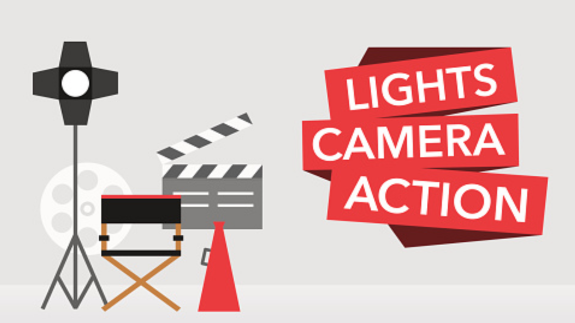7 interviewing tips for video storytellers
By Laura McClure on November 23, 2016 in Interviews

Laurie House is a documentary filmmaker in New York and a video producer at TED. Below, she offers advice for student storytellers who want to conduct video interviews — like this — that open a window of understanding for viewers:
Every interviewed someone officially? Or talked to a friend about something going on in their life? Ok, so you probably already have more interview skills than you realize. I love to interview people because I get to go into a new world and start asking nosy questions. I like to get to the bottom of things. And I like that interviewing gives me a chance to ask things that I might not normally. For someone to give me their story is such an honor. In return for that honor, I try my hardest to help people say what they want, to make sure what comes out is real — and that it represents them. That it helps them to be heard. Here are some of my tips for documentary video interviews:
1. Interview style: Besides the standard sit down interview, you can set up your subject to be doing an activity that reveals something about them, like how they cook a meal. Or, you might set up the camera to capture an interview while they’re in the car. “Walk n talk” interviews can be fun but technically challenging, so plan ahead.
2. Location: Choose a location to match your content. A location can show a lot about someone — for example, a subject could give you a tour of their house, or show you around their classroom, or talk to you on the football field. Outdoor light is great.
3. Framing: Be intentional about your framing. It’s best to use horizontal (landscape) framing if you’re using an iPhone for video, but there’s really no ‘wrong’ or ‘right’ framing any more, as long as it’s intentional and motivated by the content. For example, you can shoot someone upside down, if they have a Batman costume on…but if it’s not motivated by the content, creative framing can be distracting. Is someone especially formal? Maybe play with that instead of trying to hide it. For example, you could frame them in a more formal, wider shot to emphasize their formality, rather than in a closeup where they just look uncomfortable.
4. Background: Pay attention to background noise and activity. What is happening visually in the background? If there’s background activity, make sure it’s motivated and works for the content — otherwise, it’s distracting. What noise is in the background? Good audio is important, so pay extra attention to any background noise where you set up. Listen for sounds that you don’t normally notice that could be distracting. If you start an interview and find that the background noise is distracting, don’t hesitate to stop the interview and move to somewhere quieter. Before you start, do a tech check for video and sound.
5. Interviewing: Really listen. If you are real, relaxed and spontaneous, the person you’re talking to will be more likely to mirror that. Don’t just wait for a person’s answer with glazed over eyes, glancing down or reading your next question. Your interview subject will take your cue. Also, let them do the talking! Sometimes it’s best to leave space when they finish speaking, instead of jumping in with your response or your next question. A slightly awkward silence can sometimes inspire and provoke a person to bring out their deeper thoughts. And remember, what is interesting to you is probably interesting to others, so go ahead and ask — within reason, of course.
6. Troubleshooting: Sometimes when people are being interviewed, they get uptight and start talking like they are not themselves. How can you break that trend? First, check that you are speaking in a real way to them, rather than in a formal, stilted way where you’re reading your questions directly from the page. Then, help them come back into themselves by throwing in a surprise question or changing your line of questioning or even taking a moment to stop and triplecheck your recording equipment.
7. Important to remember: If you need to spell out information or a backstory to provide context, make sure to do this on video with the subject. Also, encourage your subject to tell an anecdote or story, not just a description of how they feel. This can be easy to forget!
To learn something new every week, sign up for the TED-Ed Newsletter here >>
Image credit: iStock
Tags: Documentary, Film, Interview, Videos